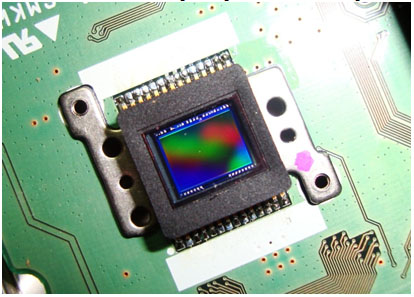
Source: CCD sensor, Ahmed2IQ, Wikimedia Commons
Did you know that your digital camera relies on the photoelectric effect in order to take photographs? Photons enter the camera through the lens and are focused onto a special sensor called a charge-coupled device, or CCD. A typical CCD is a light-sensitive material crisscrossed by a grid of tiny channels that divide it into several million separate picture elements, or pixels.

Source: CCD sensor, Ahmed2IQ, Wikimedia Commons
Each pixel is divided into sections that are covered with red, green, and blue filters which allow only photons of certain frequency through. When the light-sensitive material is struck by incident photons, the photoelectric effect causes it to emit a number of electrons proportional to the number of photons, and the CCD stores those electrons in an electronic device called a capacitor.
After the exposure is over, the CCD circuitry records the amount of charge in each capacitor; the greater the charge is in a given capacitor, the brighter that pixel will shine in the final image. The resulting mosaic is transferred to a processor that converts it into the image you see.
With digital cameras, you can take pictures of the physics applications you see every day.